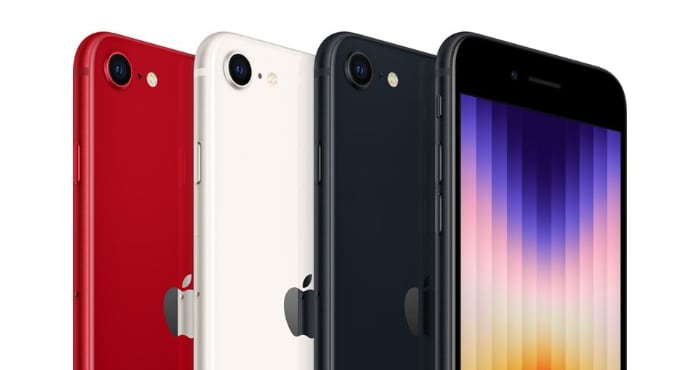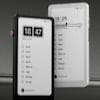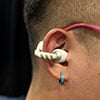Today, Apple showed off a lot of powerful new tech, but the most interesting reveal was an update to the budget-friendly iPhone SE. New iPhone 13 models range in price from $699 for the base 13 Mini to $1,599 for a maxed out Pro Max, putting them out of many people's price range. However, the new iPhone SE (3rd generation) costs $429 and it has been updated to include the same A15 processor found on all iPhone 13 models and 5G.

The newest iPhone SE still doesn't have all the bells and whistles of the iPhone 13: it's smaller, with a lower resolution display and single camera. Here's what the iPhone SE lacks compared to the iPhone 13:
- The SE has a 4.7" LCD Retina HD display (326ppi), compared to the 13's 6.1" OLED Super Retina XDR display (460ppi). The screen resolution is a change you'll probably notice if you're currently using a phone with OLED screen, but if you're upgrading from a lower end model the Retina HD display still a nice screen.
- The SE has old-style black bezels on the top and bottom of the screen, while the iPhone 13 screen covers the full face of the device.
- The SE has Touch ID, while the iPhone 13 has Face ID. However, some people may prefer Touch ID, particularly if they often need to wear masks which stops Face ID from recognizing you.
- The SE has a lower storage capacity from 64GB - 256GB, while the 13 has from 128GB - 512GB.
- The SE has lower battery life with Apple advertising up to 15 hours of video playback compared to the 13's 19 hours of video playback.
- The SE lacks advanced camera features: it only has a single 12MP rear-facing camera, it has a lower-resolution 7MP front-facing camera, and can't record HDR video. Still, it's a perfectly adequate camera and the upgrade to the A15 chip means it has access to newer camera software with Apple's Deep Fusion image processing, resulting in better photos.
- The SE won't support AT&T's upcoming "Andromeda" 5G network, so it won't have access to the highest speeds on AT&T. Verizon and T-Mobile customers will get the full advantage of those 5G networks.
But the by adding the A15 processor — the same chip all iPhone 13 models use — the iPhone SE will have speedy performance for any apps (or games) you need to run. 5G will give it faster performance on the go, though AT&T subscribers won't have full 5G speeds because the iPhone SE doesn't support the specific bandwidth the new Andromeda network will use. AT&T customers should still get 4G speeds, which makes the phone a little less appealing for AT&T users — but Verizon and T-Mobile customers should have full access to 5G speeds. Most importantly these features will help future-proof your phone. You'll be able to hold on to it for longer, because it doesn't start off with an old processor.
The 3rd generation model takes the iPhone SE from being a cheap, slow iPhone to a reasonable alternative to top-tier iPhone models for people who don't care about big screens and don't need massive amounts of storage.
If you're in the market for a tablet, Apple's iPad Air is getting a similar update with a new, faster processor: the 5th generation iPad Air will use Apple's M1 processor, the same as the iPad Pro. And if you need mobile connectivity, it now supports 5G. The iPad Air is still smaller (10.9") than the high-end iPad Pro models (11" and 12.9"), and has a lower resolution screen. But similar to the iPhone SE, we think most tablet users won't mind the loss of these features, and will appreciate the speedy performance of the M1 chip.
The iPad Air (10.9") starts at $599, which is much less than the iPad Pro (11") at $799 or the larger iPad Pro (12.9") at $1099. It's not the cheapest iPad you can buy — that honor goes to the iPad (10.2"), which starts at $329. However, this low-end iPad model runs on the older A13 processor, which will probably feel sluggish running games or high-end apps. For the power on offer, the iPad Air is a good deal for a tablet that will last for a long time.
Both the iPhone SE (3rd generation) and the iPad Air (5th generation) will be available for pre-order on Friday, March 11, and they'll ship next Friday, March 18.
[Image credit: Apple]
Elizabeth Harper is a writer and editor with more than a decade of experience covering consumer technology and entertainment. In addition to writing for Techlicious, she's Editorial Director of Blizzard Watch and is published on sites all over the web including Time, CBS, Engadget, The Daily Dot and DealNews.
















